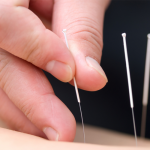Did you know that 38% of U.S. adults use some form of complementary and alternative medicine (CAM)? Almost 12% of children also went through CAM treatments.
This rise in CAM usage has led to many American medical schools now offering courses on them. In fact, almost one in three med schools in the U.S., including Harvard and Yale, now do.
A huge reason for this surge in popularity is that CAM therapies are part of holistic medicine. There’s also the fact that mainstream medicine has become too expensive. In 2018 alone, the average health care spending was $11,212 per person.
What exactly is holistic medicine though? How does it differ from conventional medicine?
All these questions and more, we’ll answer in this post, so be sure to keep reading!
Table of Contents
The Philosophy Behind Holistic Medicine
Holistic medicine approaches health and healing by considering the whole person. Instead of focusing only on the “current” complaint — it factors in the body, mind, and emotions of the patient. Holistic doctors believe that proper balance in life is key to optimal health.
As such, holistic healing believes that to be healthy, the whole body needs to work properly. If one suffers from an emotional imbalance, the rest of the body suffers too.
For instance, you may have noticed you’re getting more stomachaches. Your muscles also tend to be tense and painful, which make it hard for you to sleep at night. Even if you do, you still feel tired throughout most of the day.
These are physical symptoms, but they may be signs of high-stress levels. In fact, these are also signs of anxiety disorders. Note that anxiety affects 40 million Americans, and almost half also have depression.
If you go to a holistic doctor for your stomachaches, this won’t be the only issue addressed. The doctor will also consider the possibility of stress that may be causing your tummy aches.
Forms of Health Care Used in Holistic Healing
A holistic doctor uses a variety of healing practices, including CAM therapies. They may also use mainstream medicine in their treatment.
Let’s say you’re one of the 38 million Americans who suffer from migraines. If you opt for holistic healing, the doctor will not only prescribe you with pain killers. The doctor will also consider any other factors that may be causing your condition.
This can include your sleeping habits, stress levels, diet, and even personal problems. From there, the doctor may recommend lifestyle changes that may reduce your migraines. This can be adjusting your sleeping time or even getting chiropractic treatment.
As you can see, holistic medicine is a more custom approach to better health. After all, each person has different health needs and circumstances. Holistic doctors consider these individual needs to address one’s unique health concerns.
CAM Therapies in Holistic Healing
Almost if not all holistic health programs involve CAM therapies and treatments. They can include traditional medicine, touch therapy, and the use of herbal medicine.
Traditional Alternative Medicine
CAM practices include traditional alternative medicine, like acupuncture, homeopathy, and naturopathy. Many of these have roots dating back hundreds of years ago. Acupuncture is one of the most common CAM treatments, with over 14 million people in the U.S. having used it.
The Power of Touch
Massage therapy and chiropractic care are also often used in holistic healing. These use the healing power of touch, a concept backed by science. In one study, 40% of participants said massage therapy helped lessen their pain.
Diet and Herbs
A poor diet can raise your risk of major diseases, like heart disease and diabetes. In fact, a study found a link between diet and almost half of U.S. deaths caused by these diseases in 2012.
This is why holistic doctors also consider one’s eating habits. They recommend dietary changes and using herbal medicine. This informational post talks about one of the science-backed herbal medicines out there.
Mind Healing
Almost eight in every 10 Americans feel stressed out. Almost half even say they experience it frequently.
It’s no wonder then that more and more folks in the U.S. are getting sick. After all, too much stress is a catalyst for diseases such as heart disease, diabetes, and obesity. It also speeds up aging, which is likely the reason stress can also increase risks of dementia.
Holistic doctors approach this mind and body connection by first healing the mind. Meditation is one of the most common mind healing practice. Some also use hypnosis and biofeedback to boost their patient’s mental health.
Western Medicine and Procedures
Western medicine is the type of healthcare practiced by medical doctors and professionals. These include your primary physician, cardiologists, surgeons, nurses, and pharmacists.
Holistic doctors work with them such as if there’s a need for prescription drugs. They also work with the doctors of patients who need surgery. After surgery, they help patients with rehabilitation.
In fact, holistic health practitioners are often medical doctors themselves. In the U.S. there are about 6,000 licensed naturopathic doctors alone.
Lifestyle Changes for Improved Well-Being
Holistic health programs also include educating patients about lifestyle changes. These often involve dietary changes, exercise programs, and stress-relief techniques.
Doctors may also offer psychotherapy or talk therapy to address mental health issues. Family, relationship, and spiritual counseling can also be part of a holistic program.
Consider Holistic Healing Practices for Better Health
As you can see, holistic medicine can be a great addition to your regular healthcare regimen. Not only can it be more affordable — it can even help you cut your medication intake! Especially for potentially-addictive opioids, which doctors issued 191 million prescriptions for in 2017.
So, consider holistic healing now for a more personalized approach to better health! The sooner you work with a holistic doctor, the sooner you may feel better and live healthier!







